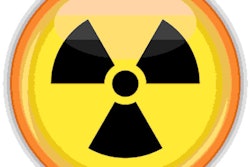
Radiation dose from medical imaging has fallen 20% over the past decade, according to a report from the U.S. National Council on Radiation Protection and Measurements (NCRP) that was published March 17 in Radiology.
The new article builds on a report released by an NCRP committee in November 2019 that covers trends in diagnostic and interventional radiologic imaging in the U.S. and tracks radiation doses used for imaging exams. The committee found that radiation exposure from medical imaging exams had decreased by as much as 20% from 2006 to 2016 -- a drastic reversal from the sixfold increase in radiation dose between 1980 and 2006.
"The radiation dose to the U.S. population went up dramatically [between 1980 and 2006] because of medical exposure, mostly from CT scanning and nuclear medicine, and that woke everybody up to the problem," senior author Dr. Fred Mettler from the University of New Mexico in Albuquerque said in a statement.
For the current article, Mettler and colleagues summarized the report and discussed potential reasons behind the sudden shift in medical radiation exposure to patients in the U.S. The report drew data from a wide range of sources, including U.S. Medicare Part B claims, the data registries of professional societies, and surveys from several federal and commercial agencies.
Overall, they discovered that effective radiation dose decreased by nearly 20%, from 2.9 mSv per person in 2006 to 2.3 mSv in 2016. The total number of radiologic imaging exams also decreased from an estimated 877 million in 2006 to 691 million in 2016.
The number of imaging exams performed during the 10-year period remained roughly the same or decreased for each of the imaging modalities -- with some variation in the trend -- despite an increase of about 23 million people in the U.S.
| Trends in medical imaging radiation exposure from 2006 to 2016 | ||||
| 2006 | 2016 | |||
| No. of procedures | Avg. individual effective dose | No. of procedures | Avg. individual effective dose | |
| Radiography | 281 million | 0.3 mSv | 275 million | 0.22 mSv |
| CT | 62 million | 1.46 mSv | 74 million | 1.37 mSv |
| Nuclear medicine | 17 million | 0.73 mSv | 13.5 million | 0.32 mSv |
| Noncardiac interventional fluoroscopy | 12 million | 0.2 mSv | 4 million | 0.12 mSv |
| Cardiac interventional fluoroscopy | 4.6 million | 0.23 mSv | 4.1 million | 0.13 mSv |
One of the principal reasons for the overall reduction was the substantial decrease in the number of nuclear medicine procedures performed, from 17 million in 2006 to 13.5 million in 2016. This mainly stemmed from dips in reimbursement and from studies showing that echocardiography was essentially as accurate as nuclear medicine procedures for cardiac ischemia, Mettler said.
For CT, a key driver of medical radiation exposure in the U.S., individual effective radiation dose decreased by approximately 6%, though the total number of exams performed did increase.
CT radiation dose has likely decreased due to the rise of dose-modulation techniques and improvements in CT technology, noted co-author Mahadevappa Mahesh, PhD, of Johns Hopkins University School of Medicine. He also credited the reduction to ongoing efforts and campaigns by imaging societies to optimize dose and reduce unnecessary imaging.
"Although the tide of medical radiation dose to the U.S. population seems, based on the data of Mettler et al, to have finally shown evidence of turning, numerous efforts remain to improve implementation of the fundamental radiologic protection principles of justification and optimization across the U.S," wrote Dr. Andrew Einstein, PhD, from Columbia University Irving Medical Center, in an accompanying editorial.



















